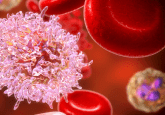The gene expression changes behind Alzheimer’s disease

Massachusetts Institute of Technology (MIT; MA, USA) researchers have published four papers on the molecular changes underlying Alzheimer’s disease.
Currently, there are three FDA-approved drugs available to treat symptoms of mild to moderate Alzheimer’s disease; however, these are not curative and cannot prevent progression of the disease. Researchers at MIT have carried out a broad analysis of the Alzheimer’s-affected brain and looked at the genomic, epigenomic and transcriptomic changes that occur across different cell types, hoping to reveal new drug targets. This collaborative effort has resulted in four papers published in Cell.
The researchers analyzed more than 2 million cells obtained from 427 postmortem brain samples from the Religious Orders Study/Memory and Aging Project (ROSMAP). ROSMAP has been running since 1994, tracking changes in memory and motor function along with other age-related changes.
The studies were led by Li-Huei Tsai, the director of MIT’s Picower Institute for Learning and Memory, and Manolis Kellis, a professor of computer science. “What we set out to do was blend together our computational and biological expertise and take an unbiased look at Alzheimer’s at an unprecedented scale across hundreds of individuals – something that has just never been done before,” commented Kellis.
As many previous studies have focussed on the amyloid plaques that are indicative of Alzheimer’s disease, the researchers aimed to collect data that could reveal other approaches to treating the disease.
 The Human Brain Project: 10 years of research development in neuroscience
The Human Brain Project: 10 years of research development in neuroscience
The 10-year funding period for the Human Brain Project may have come to an end, but what has been achieved in this time will continue to benefit the field.
In the first of the papers, the researchers used single-cell RNA-sequencing (scRNA-seq) to analyze the gene expression patterns of 54 types of brain cells and identified the cellular functions that were most affected in brains with Alzheimer’s [1]. This revealed that impairments in mitochondrial function, synaptic signaling and the protein complexes needed to maintain the structural integrity of the genome are present in the Alzheimer’s brain. They also found that the genetic pathways related to lipid metabolism were disrupted. Tsai and Kellis have previously shown that APOE4 – a genetic risk factor of Alzheimer’s – interferes with lipid metabolism.
To study epigenomic changes, the researchers used an assay for transposase-accessible chromatic sequencing (ATAC-seq), a method that determines chromatin accessibility across the genome [2]. When combined with scRNA-seq, this can link information about how much a gene is expressed with how accessible the gene is. They identified the cell types that were most likely to express disease-linked genes, finding these mostly occurred in the microglia. The researchers also found that cells in the brain undergo epigenomic erosion as Alzheimer’s progresses, which contributes to the loss of cell identify as the normal pattern of accessible genomic sites are lost.
The third paper used RNA sequencing to classify microglia into 12 different states, based on the level of gene expression [3]. This revealed that as Alzheimer’s progresses, an increasing number of microglia enter inflammatory states. Previous studies by Tsai have shown that increased inflammation in the brain causes the blood–brain barrier to degrade and that neurons start to have challenges communicating. As more microglia become inflamed, fewer exist in the homeostatic state needed for normal brain function. The researchers identified transcription factors that keep microglia in this homeostatic state and hope to find a way to activate these factors as a possible treatment for Alzheimer’s disease in the future.
The fourth study found that it becomes more difficult for neurons to repair when DNA damage accumulates, which leads to genome rearrangements and 3D folding defects [4]. “When you have a lot of DNA damage in neurons, the cells, in their attempt to put the genome back together, make mistakes that cause rearrangements,” explained Vishnu Dileep, who led this study. These changes seem to mostly impact genes that are related to synaptic activity, which could contribute to the cognitive decline associated with Alzheimer’s.
The researchers will use the data and information gained from these four studies to target some of the key genes identified, hoping this will lead to new drugs to treat Alzheimer’s disease. “We want the world to use this data,” Kellis said. “We’ve created online repositories where people can interact with the data, can access it, visualize it and conduct analyses on the fly.”





